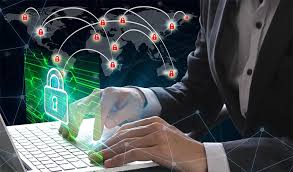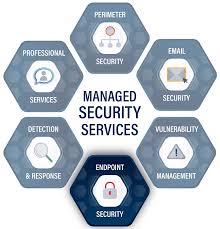In 2025,Threats and Protective Measures for ransomware is one of the most serious cyber threats facing both businesses and individual users in the United States. This type of malware can encrypt your data or lock your system until a ransom is paid—often in untraceable cryptocurrency. Whether it targets hospitals, schools, corporations, or small businesses, ransomware causes massive disruption, financial loss, and long-term harm to reputation. In this comprehensive guide, we’ll explain what ransomware is, how it works, and most importantly—and practically—how businesses and individuals in the U.S. can defend themselves with proactive protection, secure backups, employee training, and incident recovery.
What Is Threats and Protective Measures for Ransomware and Why It’s a Critical Threat in the U.S.
Ransomware is a form of malicious software that blocks access to your files or entire device until a ransom is paid. Criminals use it in two main ways: crypto-ransomware, which encrypts your data, and locker ransomware, which simply locks your device. Ransomware spreads through phishing emails, malicious attachments, infected websites, and software vulnerabilities. More sophisticated actors exploit weak passwords or open ports, especially RDP (Remote Desktop Protocol), to breach entire networks.
In the U.S., ransomware attacks have surged in hospitals, financial firms, and even local governments. In many cases, attackers threaten to both encrypt valuable data and leak private information—potentially triggering liability for HIPAA or CCPA violations. That’s why prevention and immediate remediation are not optional—they’re essential.
How to Prevent Threats and Protective Measures for Ransomware Attacks
Protecting your data requires a layered cybersecurity strategy that combines technology, best practices, and ongoing vigilance.
Use Strong Authentication—Enable MFA Right Away
Weak credentials are one of the top causes of ransomware entry. Always use unique, complex passwords and enable multi‑factor authentication (MFA) for cloud ITservices, VPNs, and email accounts. Adding a secondary verification step—like a code or biometric check—dramatically increases your defense against stolen or cracked passwords.
Maintain Secure, Regular Backups That Are Offline
Reliable backups are your last line of defense. Store backups off-site or in secure cloud environments, and encrypt them for safety. Resist leaving external drives connected to your network—they can be encrypted too. Regularly test backup restores to confirm you can recover quickly if an attack occurs.
Keep Systems Updated and Patched
Nearly every Threats and Protective Measures for ransomware outbreak relies on unpatched software vulnerabilities. Whether it’s Windows, macOS, Linux servers, web browsers, or business-critical applications, ensure updates are applied promptly. Use automated patch management tools to reduce human error and live coverage gaps.
Train Employees and Maintain Cyber Awareness
Human error remains the largest risk factor. Regularly train staff to spot phishing and social engineering attempts. Teach them to scrutinize email senders, suspicious URLs, and unexpected attachments. Empower them with clear steps to report potential cyber threats.
Apply the Principle of Least Privilege and Access Controls
Most Threats and Protective Measures for ransomware infections are contained to a single user account—limiting account access can stop attacks from spreading laterally. Use strict access controls, role-based permissions, and separate admin accounts for IT services staff. Monitor and log privileged access to spot anomalies early.
Deploy Advanced Security Solutions with Real-Time Threats and Protective Measures Detection
Basic antivirus is no longer sufficient. Use next-generation endpoint protection, threat intelligence platforms, firewalls, and intrusion prevention systems. These tools can spot unusual behavior, recognize zero-day exploits, and quarantine potentially infected systems in real-time.
Secure Remote Access Channels
Remote workers and cloud environments have expanded risk. Always secure VPNs and RDP with MFA and restricted IP access. Disable RDP exposure from the public internet, and audit logs to identify suspicious connections or login attempts.
What to Do If Threats and Protective Measures for Ransomware Breaks In
Even with strong defenses, it’s crucial to be ready for an attack. A swift, well-coordinated incident response can drastically reduce damage.
Isolate Affected Devices Immediately
Disconnect infected computers or servers from your network. This prevents the ransomware from spreading. If a shared drive or cloud account is compromised, suspend access until the incident is contained.
Identify the Threats and Protective Measures for Ransomware Variant
Knowing the specific strain can help assess whether decryption tools are available. Free resources like “No More Ransom” support decryption for some known variants. Collect ransom notes, file hashes, and encrypted samples for investigation.
Eradicate the Malware with Expert Tools
Use trusted anti-malware scanners or engage a professional incident response team to remove the threat. Eradication must be complete—partial cleaning risks reinfection or hidden backdoors.
Restore from Clean Backups
Once malware is eliminated, restore systems using verified backups. Sanitize every file and system before connecting back to critical networks. Document the restoration process to prevent mistakes.
Report the Incident Promptly
In the U.S., Threats and Protective Measures for ransomware attacks must be reported to the FBI’s IC3 and, in regulated industries, to relevant bodies like OCR for healthcare. Timely reporting aids investigations and may help reveal systemic vulnerabilities affecting others.
Threats and Protective Measures for Ransomware for Healthcare Providers
Hospitals, clinics, and medical research centers face dramatic consequences if ransomware disrupts operations. That makes specialized controls necessary.
Use EHR-Specific Access Controls
Apply granular permissions to electronic health record (EHR) systems. Ensure only authorized staff can access sensitive patient data. Implement session timeouts, IP restrictions, and MFA for any remote access.
Conduct Regular Cybersecurity Audits and Risk Assessments
Healthcare institutions must plan for worst-case scenarios. Run regular penetration tests, simulate incidents, and review logs. This helps identify weaknesses before they’re exploited, and supports HIPAA compliance efforts.
Isolate Critical Medical Devices on a Segmented Network
Medical equipment is often overlooked in cybersecurity plans. Place IoT systems on a separate, locked-down network segment with no direct internet access and limited cross-network communication. This prevents malware from moving across systems.
Preventive Hygiene Checklist — A Narrative Approach
Think of ransomware prevention like building a fortress. At the core: MFA, strong passwords, and backups. Surround that with software patches, encryption, and offline storage. Train your people to be vigilant, restrict access to minimize breaches, and deploy advanced security tools to detect and stop attacks. Finally, prepare an incident response plan and practice it often—your readiness can mean the difference between a minor hiccup and major disaster.
FAQs — Quick Answers for Busy U.S. Businesses
What is the Best Threats and Protective Measures for Ransomware Protection Strategy?
A strong defense combines MFA, frequent offline backups, timely software patches, employee training, access restrictions, and proactive malware detection.
Should I Ever Pay the Threats and Protective Measures for Ransom?
No. Paying doesn’t guarantee data recovery, and it encourages further attacks. Better to rely on clean backups and expert incident response.
Which Sectors in the U.S. Are Most at Risk?
Healthcare, finance, education, legal, and government agencies are prime targets due to the sensitivity and value of their data or disruption impact.
Can Threats and Protective Measures for Ransomware Impact Mobile Devices?
Yes, Android devices are increasingly targeted. Install apps only from trusted stores, activate security patches, and avoid malicious links to protect your mobile data.
How Often Should I Back Up My Data?
It depends on usage. Critical business systems need hourly backups, while less active environments may be fine with daily backups.
Conclusion: Take Action Before It’s Too Late
Ransomware is a serious and growing threat across the USA, but it’s manageable with smart, layered defenses. By combining strong authentication, secure backups, regular patching, user education, advanced security tools, and a practiced incident response plan, you can significantly reduce your risk—and recover quickly if you do get hit.If your business or healthcare institution needs ransomware protection, Remote Expert Solutions (RES) offers expert cybersecurity services, training, backups, and incident response planning designed specifically for U.S. organizations. Don’t wait until disaster strikes—start protecting your operations today.
Contact Us
Admin@remotexpertsolutions.com






